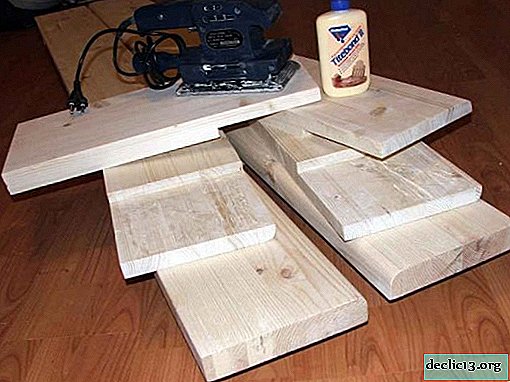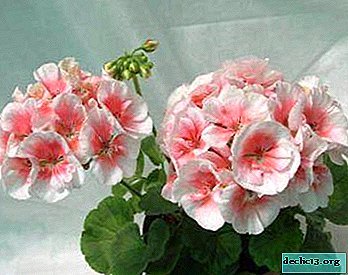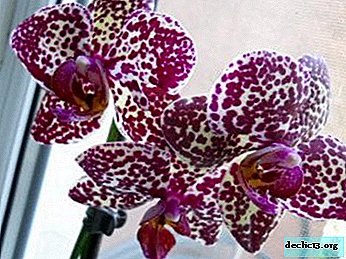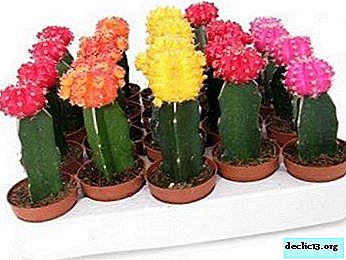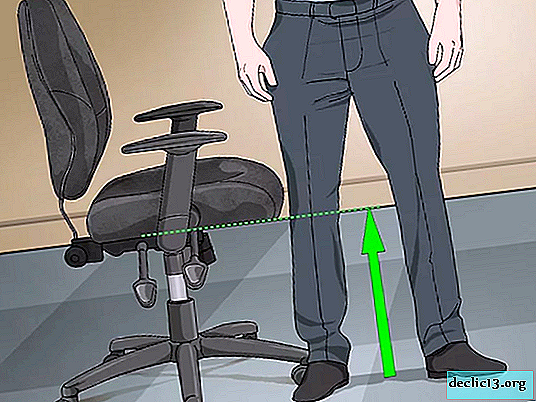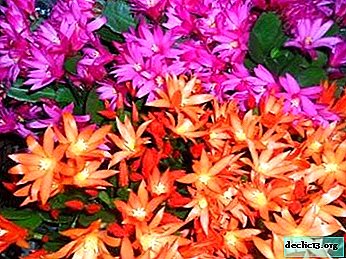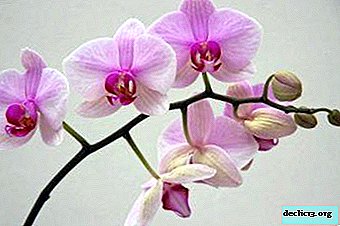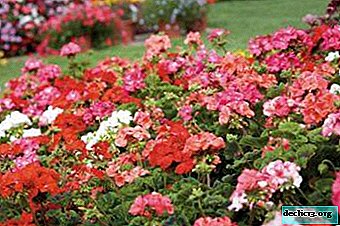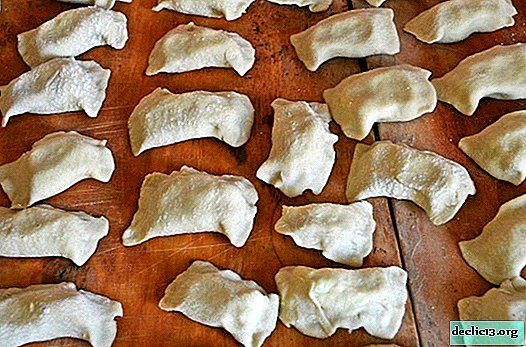Exquisite handsome clerodendrum brilliant - description, photo, nuances of caring for a houseplant

Among all the clerodendrum, the Wallich clerodendrum or the brilliant clodendrum stand out. This handsome 50-centimeter tall blooms brightly and unusually.
Even during periods of rest, when the buds have fallen, it looks exotic thanks to the glossy leaves. All that is necessary is to choose the right place where to put the pot with the plant, periodically spray it from the sprayer and feed it with fertilizers. Is it hard to care for him? How to water it? Let us consider in our article the answers to all these questions in detail. We also recommend watching a useful video on the topic.
Botanical Description and History
In the years 1817-1842. N. Wallich, who worked as the manager of the Calcutta Botanical Garden, often participated in expeditions. He wrote many scientific papers and contributed to the hybridization of many plants. His hybrids were willingly bought abroad to decorate the best greenhouses in Europe. In honor of this Danish botanist and researcher of the flora of India, they called the brilliant clerodendrum.
It is an evergreen shrub or small tree. He has drooping shoots. Leaves are lanceolate in shape. They are glossy with a wavy edge. They reach a length of fifteen centimeters. During flowering, lush inflorescences of white fragrant flowers form on the shrub.. They are collected in long, flowing, racemose inflorescences.
IMPORTANT: 2-4 meters - the height of the bush growing in natural conditions - in the mountains of Nepal at an altitude of more than 1 thousand meters. At home, it is many times lower - 50 cm.Many flower growers grow clerodendrum in a cache-pot to make it look spectacular. In this case, thin shoots hang from it. In late August, inflorescences will form at the ends of each branch. Flowers, whose diameter is 3 cm, bloom gradually. 1.5-2 months admire the beauty of a flowering plant, in which flowers with 5 petals, long stamens and a swollen cup.
Description of the appearance of the variety
Clerodendrum brilliant - a plant that is rarely found on window sills in the homes of Russians. The only variety variety common in the Russian Federation is Prospero. This variety has beautiful glossy leaves with a wavy edge. You can recognize it by 4-sided branched stems. The color of the leaves is dark green.
Photo
Next, you can see the photo of the brilliant Clerodendrum.



Where and how to plant this indoor plant?
Clerodendrum brilliant buy in the fall at a flower shop when it blooms profusely. Unlike other clerodendrums, you cannot buy seeds, sow them in a pot and after some time admire the beauty of an unusual plant.
After buying an adult plant, many novice growers are surprised that there is no trace of its former beauty. They transport it sloppy, as a result of which the buds fall off. Another reason is the temperature difference. After the purchase, they don’t unpack the plant immediately, but give it time - 60-90 minutes, so that it stands and gets used to new conditions.
ATTENTION: There are a lot of names for the brilliant clerodendrum: Veil, Veil of the bride, tears of Magnificent Cleopatra.After purchase, the plant (if all buds have fallen) is transplanted into a pot with a diameter of not more than 20 cm. The optimal time for transplanting is 30 days after cutting the peduncles. For him, carefully select the soil. It must be fortified and breathable.
In the store they sometimes buy ready-made. There is nothing wrong with this, but it is better to mix it with Biohumus and compost. Some gardeners prepare the substrate on their own, having gathered land in the garden and added fine-grained sea sand and perlite to it. After transplantation, the conditions of detention do not change so that this representative of the flora does not get sick.
If you do not prepare the soil and do not take care of a sufficient number of trace elements in it, the shiny clerodendrum will not take root after transplantation. He will perish. The same outcome will follow if the fragile root system is damaged.
Soil requirements
 Even having bought ready soil for a plant, the land is disinfected before transplantation. Disinfection is necessary to rid it of possible infections and pests. To do this, put it in the cold or hold it in a water bath.
Even having bought ready soil for a plant, the land is disinfected before transplantation. Disinfection is necessary to rid it of possible infections and pests. To do this, put it in the cold or hold it in a water bath.
Ideal substrate composition:
- 1 part of sand and clay;
- 2 hours of leaf land;
- 6 hours peat.
The pot with clerodendrum is placed on a well-lit, but not in direct sunlight, window. Not taking care of good lighting, they are not surprised at his death after a few months. The flower does not like temperature changes. Do not allow temperature drops below + 18⁰С. He feels good when the room is hot, but in this case they spray him daily.
How to care?
TIP: If the room temperature is more than + 24⁰С, maintain air humidity by regular spraying or placing water containers near the pot with it.The flower is watered as the soil dries.. It should dry between waterings. When flowering, they are sure to feed it by buying special fertilizers for flowering plants in the store. The optimal frequency of fertilizing - 1 time per month.
After all the flowers have faded, remove their remains from the peduncles. A month later, flower stalks are removed, thereby preparing the plant for transplantation. The pot is carefully selected if its diameter exceeds 20 cm, the clerodendrum does not bloom, and the roots rot.
Common Diseases and Pests
Clerodendrum brilliant hardly damaged by diseases and pests. He is ill when the grower violates the conditions of detention.
- The leaves turn yellow due to lack of moisture and stuffiness in the room.
- The leaves become small and the stems are long due to a lack of nutrients.
- The stems are pulled out when there is a lack of lighting.
Novice growers often do not pay attention to the withering and loss of strength of the flower. He became a victim of pests (aphids, whiteflies, midges, spider mites). It is necessary to examine the leaves and stems. Having noticed the pests, they are removed from the affected parts of the clerodendrum manually, and then they are treated with a soap solution. If it does not help, buy and use insecticides according to the instructions. To prevent the appearance of pests, periodically wipe the leaves with a soap solution.
Propagation Features
 The plant propagates by cuttings. Better root stems, on which there are 3-4 leaf nodes.
The plant propagates by cuttings. Better root stems, on which there are 3-4 leaf nodes.
Having cut off, root sprouts in a moist substrate or in water. That they sprout faster, maintain a temperature in the region of + 20-22 degrees Celsius.
When the roots appear, the cuttings are transplanted into the pot. To better maintain moisture and root quickly, each of them is covered with a cut bottle. Before this, seedlings are treated with growth stimulators (Heteroauxin, Zircon or Kornevin). With their help accelerate the rooting process. They are watered often and plentifully.
Watch the video on the cuttings of clerodendrum:
Possible problems
Sometimes flower growers see that the brilliant clerodendrum has thrown off the leaves. They watch this picture in the winter. Is he dead? No. In spring, the clerodendrum will overgrow with new leaves and bloom. If watering is frequent and plentiful, but at the same time the plant is transplanted into a pot of a smaller diameter, it may die, as the roots rot.
Conclusion
Even a novice grower, if desired, will cope with the care of a low evergreen shrub. Timely watering it and fertilizing during flowering with fertilizers for flowering plants, it will delight you with an abundance of beautiful, dark pink flowers collected in inflorescences in the form of short brushes or shields.

